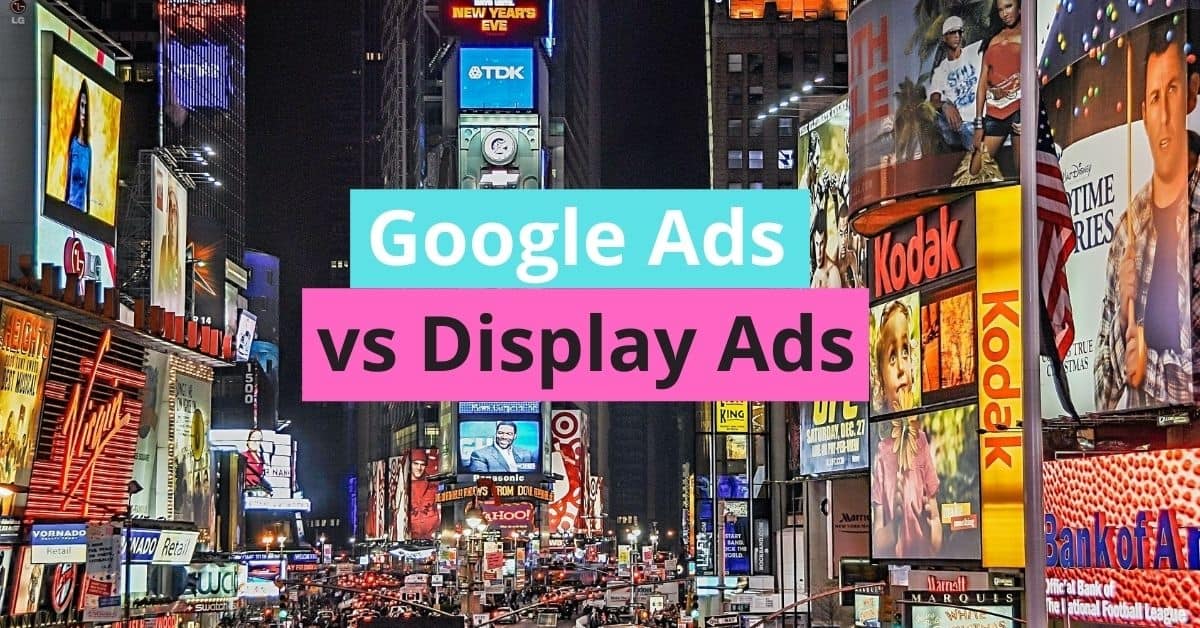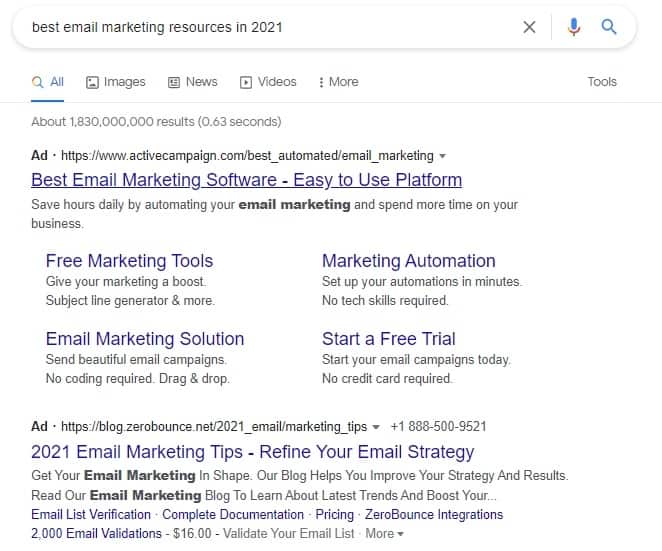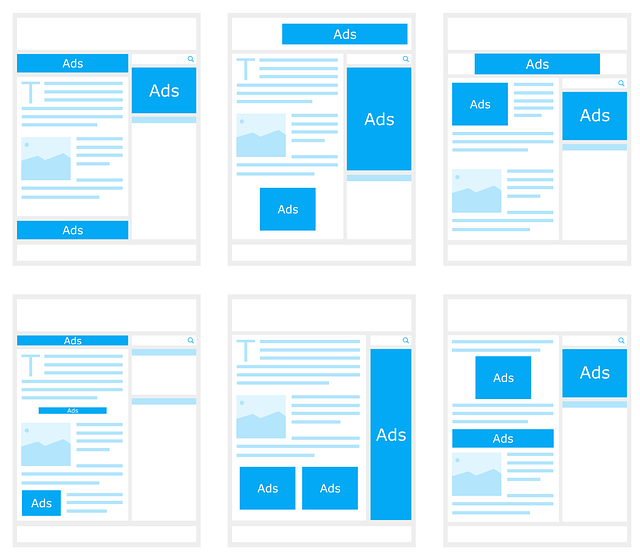Google Ads vs Display Ads (9 Differences & Comparison)

Go big on Google! The search engine giant is prime real estate for online advertisements.
Google Ads has several formats for managing campaigns. This includes text ads, image-based ads, and videos. Just because the text-based format is very popular, marketers often use the generic term Google ads to refer to them.
Therefore, this blog also follows the same convention of referring search ads (text-based) as Google ads.
The search engine has two main formats for image-based ads. Choose between Google Shopping and the Google Display Network. Google Shopping is similar to search ads because they are visible above organic search results.
GDN, on the other hand, represents millions of partner sites of Google. These sites serve as a huge platform to show display ads, independent of the results shown on SERPs.
What are the differences between Google ads and display ads? This is something that every advertiser needs to know! You cannot set up your campaign on the ad manager without decoding this first.
Let us see them further in more detail.
User intent
User intent basically refers to the reason why anyone would access the search engine. It consists of two broad categories, active and passive.
How does it affect your marketing campaign? Active intent refers to an action when people look actively for a solution. These are basically the keyword queries on Google.
A search ad primarily focuses on targeting these keyword queries to decide ad placement.

Passive user intent is when people are not actively looking for a solution. You might be simply looking for information. You visit a site displayed in the organic results.

That site is most likely a part of the Google Display Network. It will show an image-based ad relevant to your query.
YouTube presents a slightly exceptional scenario. It is a part of the GDN. So, a fair share of display ads on the video platform respond to active user intent.
Conversion Rate
The Conversion Rate (CVR) is a defining aspect of campaign success. It indicates how many people are actually taking actions you want them to take (such as, buying, signing up, calling, etc.)
The average CVR for search campaigns is between 1.5% to 2.5%. On the other hand, display ads have a much lower CVR, approximately 0.57%.
The reason for this difference should be obvious. People are actively looking for a resolution to their pain points in the case of search ads. So, they are more likely to click on an ad that shows on top of organic results.
Display ads don’t seem to have this advantage of direct targeting (except on YouTube). Google shows them only after you click on a site. If you had an active intention to convert, you would rather click on an ad than visit another website.
Buying Cycle Stages
Here’s the thing. Google ads and display ads appeal to different stages of the buying cycle.

Search ads respond to user queries when they are most likely to make a purchase. They only have to decide between the various competing ads shown along with organic results.
Display ads appeal to the initial stage of the buying cycle, raising user awareness. At this phase, the user is not actively looking for a purchase.
Of course, if the offer is attractive, a marginal percentage of users may as well as convert!
Ad outreach
Display ads clearly go deeper than search ads. A search ad is promptly visible on the top and below organic search results. There is no need to visit another website to see the ads.
However, if you do visit another website from the organic results, you will see the display ads.
Here’s a little bit more on display ads. It turns out that Facebook Ads allows you to show display ads from Google.
Of course, Facebook is not a part of the Google Display Network! But, there seems to be a mutual arrangement between these online titans.
- You will need to follow the instructions in the Facebook Ad settings.
- So, if you are running campaigns both on Google and Facebook, display ads can be a good option.
- Google text ads do not offer this advantage because Facebook would only allow ads with images.
Emergency services
Google Ads is a clear winner in this aspect. Consider this situation:
You lost the keys to your front door! Then, you need a locksmith fast. You search it on Google, and several ads come up showing locksmiths in your area.
Obviously, you are going to click on one of these Google ads instead of looking for more information on what to do in this situation! The same goes for other emergency services such as plumbing and electrical works.
Ad format
This is obvious. Display ads show images, while Google ads only show text. This means that there is greater scope for designing creative campaigns with display ads.
You can also be creative in the words-only format, but the visual appeal of images is more attractive.
Some businesses prefer to have their ad campaigns modeled around visual imagery. You might want a flashy banner displaying a cool animation. Display ads would then be an automatic option.
Accessing local markets
Google Ads is clearly a better option when you want to access a local market.
For instance, people putting the “near me” keywords are more likely to click on the results displayed with the organic results.
Ads displayed on GDN targeting these kinds of keywords are less likely to get a click. The user is looking for a fast solution instead of visiting another site for more information on the matter.
Difference in CPC
Just like the low CVR, the CPC on display ads is significantly lower than Google ads. According to an estimate, the average CPC on search ads is $2.41.
The average CPC for display ads by the same estimate stands at $0.59.
Display ads seem to be a better option when you are on a budget. However, the cost of running PPC campaigns depends on a host of factors.
Even if the CPC is more on Google Ads, it can still be a cheaper campaign than display ads!
Sales cycle
Google ads are ideal when you are marketing products with a short sales cycle. If your product does not need immediate action, display ads can be a good option. Such products include:
- Insurance
- Automobiles
- Higher education
- Enterprise software, etc.
- Retargeted ads
- etc.
Display ads can be a more viable option when you need to run a retargeting campaign.
Google will constantly display your ad to users who have interacted with your brand. E-commerce is where this is particularly true. Apart from the visual appeal, it helps to retarget users abandoning their shopping carts.
Google Ads vs Display Ads – Conclusion
Both Google ads and display ads have their merits. You need to decide which is particularly relevant for your campaign.
Usually, beginners in Google PPC start with Google ads and proceed to display ads. That said, it ultimately depends on your preferences as to which is better.
You can even set a campaign format allowing both search ads and display ads. Whatever works best, go for it!
As always, if you need my help running your Google ads campaigns, you can contact me any time…

